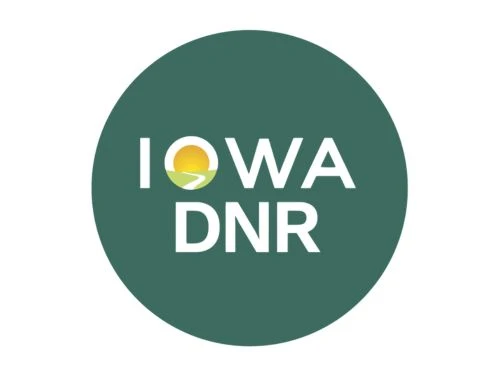Kirchner Prairie is one of the rarest of the rare habitats in Iowa – a piece of never been plowed or tiled prairie on gently rolling hills and a small, natural wetland. This 158-acre unassuming area, named for the Kirchner family who owned the property for generations, is part of the larger Dan Green Slough Wetland Complex, in northeast Clay County.
Walking in from the only parking lot on this stand-alone section surrounded by private land, wildlife biologist Dusten Paulus was pointing out the plant diversity in this small piece of Iowa history.
Leadplant, purple prairie clover, goldenrod, butterfly and common milkweed, wild bergamot, gray headed coneflower, prairie sage, vervain, cord grass, Flodman’s thistle, wild white indigo, fragrant false indigo, pale spiked lobelia and mountain mint. There’s silverleaf scurf pea, prairie blazing star, compass plant, showy tick trefoil, prairie phlox, prairie plantain, rattlesnake master, dotted blazing star and more.
“Everything is starting to pop,” Paulus said. “It’s a great time to be out here to see what an Iowa prairie looked like pre-settlement. This is what we want to replicate on reconstructed prairies in Northwest Iowa – each plant grows in its niche – it’s unique.”
Walking through the tallgrass prairie, there is obvious signs that cattle have been here. And that is intentional. Paulus said targeted grazing is used as part of an ongoing project to reduce cool season grasses and encourage the native prairie flowers.
“We’ve included conservation grazing on specific sites to try to simulate what would have occurred naturally on this area, and will try to get fire on part of the prairie this fall,” Paulus said. “The goal is to maintain what is here. Prescribed fire and conservation grazing are important tools we utilize to achieve those goals.”
The cattle are from neighboring landowner Evan Hansen, who is part of the beginning farmer program and has a one-year lease to put a mix of around 18 cow-calf pairs on the site.
“The location made it a good fit,” Hansen said.
With Kirchner Prairie being a high-quality natural area, the cattle had to go through a two-week purging, and meet added requirements before being allowed in, to avoid unintentionally introducing any invasives. The cows will be off the prairie by Sept. 1.
Paulus said a ten-acre section, as well as several smaller exclusions, have been fenced off from the cattle and will serve as a control for a month’s long study of the plant community on Kirchner Prairie that would take place during the entire 2026 growing season, from roughly late March through September/October. The proposed study, contingent upon securing a grant to fund it, will be led by Drake University in conjunction with the Iowa DNR. This study will repeat and compare the original survey data completed in 2016.
“What’s exciting is, that we’re going to find out what is out here from the study. We want to be certain we are achieving the goals of the wildlife management plan, because, in the end, we don’t want to be detrimental to the resource,” Paulus said. “We see this study as guidance for future management. I’m excited to see it moving forward.”
Prairie as a hands-on teaching lab
Iowa State University Extension conducts a Master Conservationist program that includes trips to Kirchner Prairie. Iowa Lakeside Lab has also been involved with helping to inventory and identify plants.
